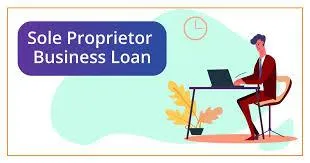
Disaster Loans for Sole Proprietors: What You Need to Know
Disaster Loans for Sole Proprietors: What You Need to Know
When disaster strikes, it doesn’t just affect large corporations. Sole proprietors—freelancers, independent contractors, and small one-person businesses—often face the greatest financial risk with the fewest safety nets. If you're a sole proprietor, disaster loans can provide a critical lifeline. But navigating the application and approval process comes with unique challenges.
This guide breaks down what you need to know about disaster loans if you're running your business solo.
Why Sole Proprietors Need Disaster Loans
Sole proprietors often don’t have access to the same financial buffers or insurance plans that larger businesses enjoy. When floods, fires, hurricanes, or even public health emergencies strike, they can quickly lose:
Clients
Inventory or tools
Workspace (home or rented)
Income streams
Disaster loans—like the SBA’s Economic Injury Disaster Loan (EIDL)—can offer the working capital needed to keep the business afloat during and after these disruptions.
Types of Disaster Loans Available to Sole Proprietors
Economic Injury Disaster Loans (EIDL)
Purpose: Covers working capital needs—like rent, utilities, payroll (even if it’s just you), and debt payments.
Loan Amount: Up to $2 million.
Interest Rate: Typically lower than conventional loans; often around 3.75%.
Term: Up to 30 years.
Requirements: Must show a loss of income due to the disaster.
Physical Disaster Loans
Purpose: Used to repair or replace physical assets (tools, office equipment, inventory, etc.).
Available even if you operate from your home.
State and Local Assistance
Some states offer emergency microloans or grants for sole proprietors.
Check with your local Small Business Development Center (SBDC) or economic development office.
What You’ll Need to Apply
Applying for a disaster loan as a sole proprietor is possible—even if you don’t have employees or a storefront. However, you need to prepare documentation that proves your business’s existence and financial loss:
✅ Tax returns (Schedule C is key)
✅ Bank statements (business and personal, if they overlap)
✅ Business licenses or permits
✅ Record of business income before and after the disaster
✅ Identification documents (ID, Social Security number)
Tip: Keep separate records for business and personal finances whenever possible—it speeds up the process and improves your chances of approval.
Common Challenges (and How to Overcome Them)
“You don’t have employees”: Even if you’re the only worker, you still qualify.
“You don’t have a business license”: Some sole proprietors aren’t required to have one, but any form of business registration helps (DBA, EIN, invoices).
“You use a personal bank account”: It’s common, but moving forward, open a dedicated business account to strengthen future applications.
Tips for Getting Approved
Be specific in describing how the disaster affected your business.
Submit complete and accurate financials—incomplete applications are the #1 reason for denial.
Follow up—don’t assume silence means denial. Many applicants get stuck in processing.
What You Can Use Disaster Loans For
Once approved, EIDL funds can help cover:
Rent for your workspace (even a portion of your home)
Business utility bills
Marketing expenses to get clients back
Loan or credit card payments for business expenses
Replacing damaged tools or inventory
Important: Avoid using funds for personal expenses—mixing personal and business uses can result in penalties or loan recalls.
Long-Term Planning
After receiving your loan, it’s smart to also:
Rebuild an emergency fund
Look into business insurance
Create a basic disaster recovery plan
Set aside savings for loan repayment
As a sole proprietor, you are your business. That means you carry all the risk—and all the potential. With the right disaster loan, you can stabilize, rebuild, and even grow stronger after a crisis.
How Business Networks Can Aid in Recovery
Click the "Get Assistance" button to begin the process – we are here to help.
